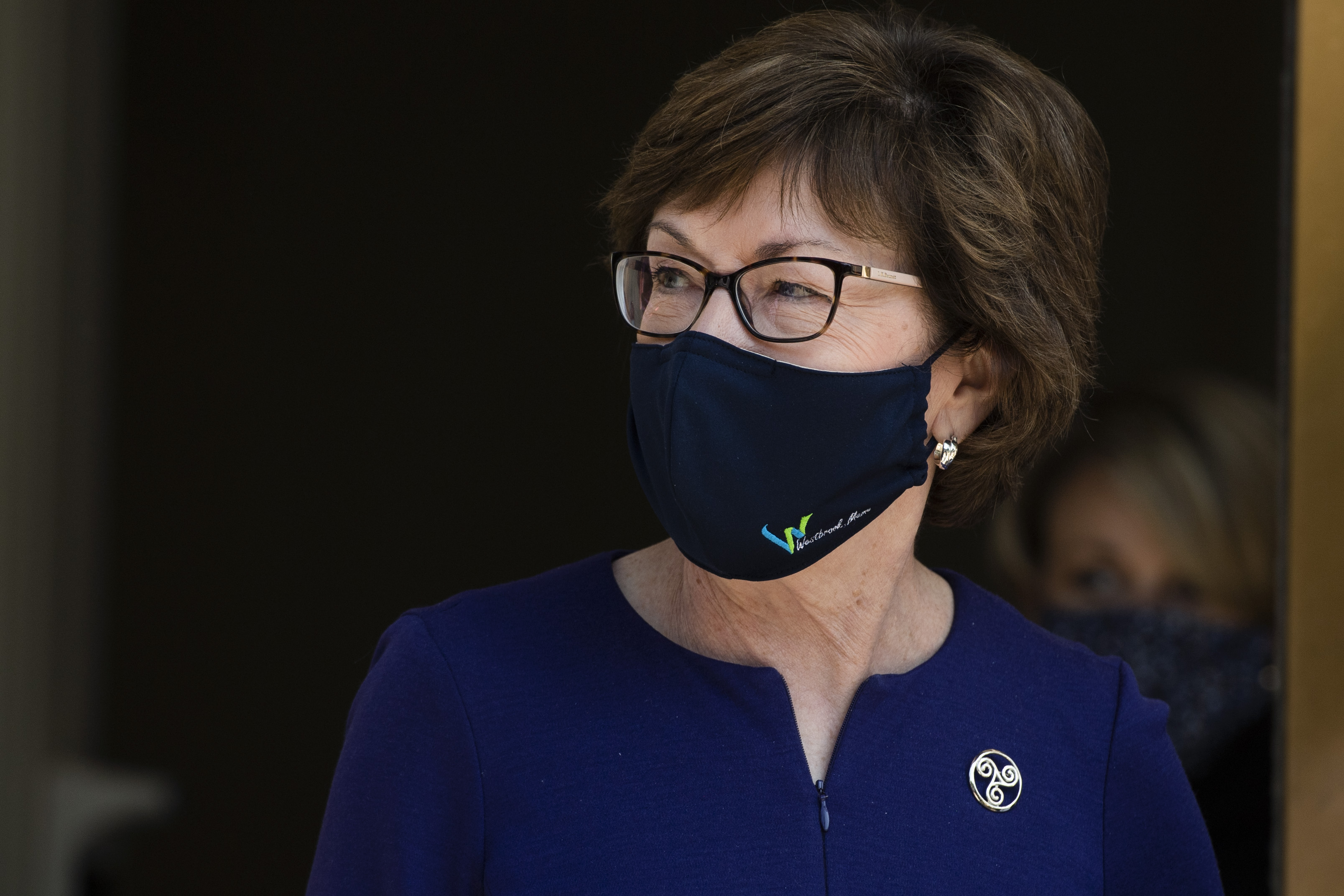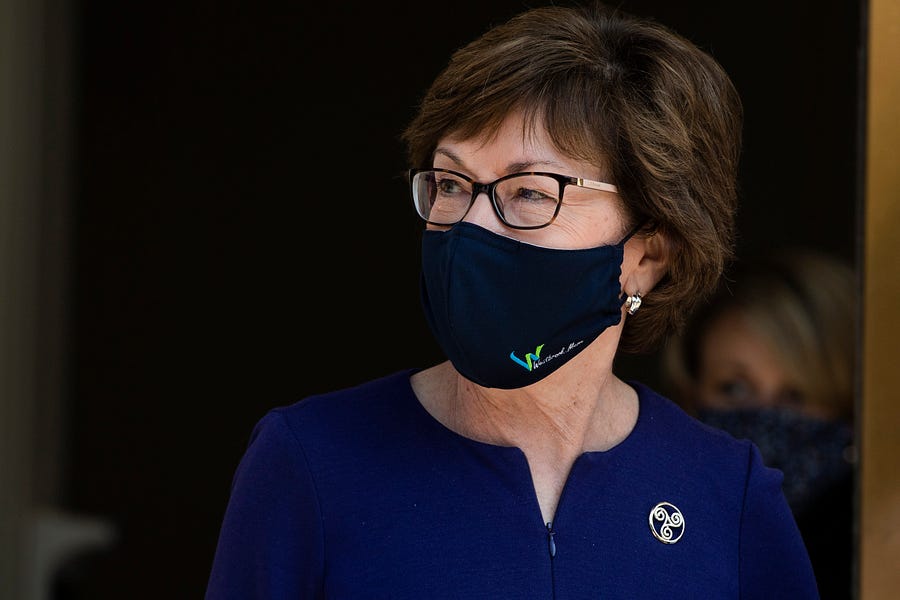Campaign Quick(ish) Hits
Don’t worry, be happy (and vote): I spoke to some college students last week and in the course of our conversation they conveyed a strong fear about the possibility of a contested election this year. I am concerned I contributed to this by writing about how an influx in mail in ballots that favor one party over another could undermine faith in the election results. BUT it’s also important to remember that Florida, Arizona, and North Carolina will all have a good chunk of their absentee ballots tallied on Election Day. And if President Trump loses two of those three states that not only voted for him in 2016 but have been reliably more red than Pennsylvania, Wisconsin, or Michigan (which do not count absentee ballots in advance), then that would be a pretty clear indication of a Biden win early in the night. And right now Trump is trailing Joe Biden in all three of those states by an average of 3-4 points across the board.
Early bird special: As expected, we’re seeing a record breaking number of early votes already. As of Friday, more than 8 million ballots had already been cast. In Wisconsin, more than four times as many people had already voted absentee over 2016. But, also as expected, those votes won’t be evenly split between Republicans and Democrats as they used to be. According to Gallup, Republicans and Democrats never differed by more than 2 points in their early vote preferences during the past four elections. But this year 62 percent of Democrats plan to vote early compared with 28 percent of Republicans. That’s showing up in the data. Democrats have requested twice as many of the nearly 10 million ballots that have been requested in Florida, Pennsylvania, North Carolina, Maine, and Iowa. And in Florida and North Carolina, we know that Democrats are returning their mail ballots at a higher rate than Republicans too. Interestingly, it looks like first-time early voters and low-turnout voters are also more likely to be registered as Democrats this year.
But what does this actually mean? Not much yet. So far, there’s no evidence that this is anything more than the same voters that would normally turn out on Election Day voting early instead. But from a tactical standpoint, it’s a big advantage for the Biden team, which can concentrate its field operations on a smaller set of their remaining voters to persuade them to turn out to vote in the remaining days. Republicans are still looking at 80-plus percent of their voter file that they will need to ensure turnout on a single day—Election Day.
Third party from the sun: After Trump shocked the world, plenty of data scientists pored over the results to see how he did it. We now know Trump won voters who didn’t like either him or Clinton—and college-educated white women. And 13 percent of Trump’s voters had voted for Obama in 2012. Strong third-party candidates attracted more votes than Trump’s margins of victory in Pennsylvania, Michigan, Wisconsin, and Florida. All of those groups are breaking for Biden this time around.
Here’s one indication of how different 2020 looks than 2016: The Green Party candidate isn’t even on the ballot in Wisconsin and Pennsylvania this time around. The NBC News/Wall Street Journal polling team “found that 2016 third-party voters are breaking toward Biden over Trump by a more than 2-to-1 margin.” Our Declan Garvey surveyed 300 2016 third-party voters for this piece and found that—while many intend to write in a name this time around—a substantial number now intend to vote for Biden.
My favorite quote from this entire election cycle happens to appear in that piece in which a Virginia voter said he’d rather vote for “a genetically engineered semi-sentient crossbreed of poison ivy and salmonella” than Trump. Agree or disagree with the sentiment, Sean sure has a way with words.
Won’t you be my (paranoid) neighbor? One of you reached out to me about a question in the most recent Fox News poll and I thought I’d share it with the class. “Who do you think your neighbors are supporting for president?” Versions of this question have been used historically to get at people’s true feelings on a range of socially sensitive subjects such as those around race, gay marriage, and willingness to vote for a woman as president. And so it was relevant that Trump was suddenly leading Biden by 11 points in response to that question. And even more so that support for Trump had increased 10 points since August. Maybe these folks have found the secret Trump voters living next door? Not so fast. Dig into the numbers a little further and you’d find this hilarious nugget: “[V]ery liberals (34 percent) are nearly three times as likely as very conservatives (13 percent) to think others are voting for the competition.” So unless you believe that the SMAGAs are more likely to out themselves only to their most liberal neighbors, this poll says more about 2016 PTSD on the left than it does about the outcome of the 2020 election. And it’s fascinating!
What if ads actually matter? Chalk another one up to my ongoing “campaign tactic efficacy experiment” aka #2020. While the disparity in ground games favors Trump, Biden is now outspending Trump on ads. Big time. Rarely do you ever see such disparities in tactics at the top of the ticket because both sides are usually so flush with cash, but this time around the Biden campaign doesn’t want to get COVID and the Trump campaign is broke. The result is that “Biden is out-advertising Trump in 72 out of 83 media markets … like Philadelphia and Wilkes-Barre in Pennsylvania and Milwaukee and Green Bay in Wisconsin.” As one interesting example of what these discrepancies mean on the ground, McClatchyreported that Biden is outspending Trump “by more than 50-to-1 on radio ads” focused specifically on rural counties and religious voters.
Small dollar, big problem: As a GOP political strategist told The Morning Dispatch last week, “PAC money is not a good barometer of what’s going on. … A really good barometer is how much candidate money [people are] raising.” Well, if that’s the case (and it certainly is up to a point), I’ve got bad news for “Cocaine” Mitch McConnell. We’ve already seen some eye popping third-quarter numbers posted by Democrats this week. Theresa Greenfield, the Democrat running against Sen. Joni Ernst in Iowa, raised $28.7 million last quarter—the most money ever raised by a Senate candidate in Iowa. Former Colorado Gov. John Hickenlooper raised $22.6 million against Sen. Cory Gardner, who raised only $3.2 million in the second quarter. And then there’s South Carolina. Senate candidate Jamie Harrison raised $57 million in the third quarter. That’s the most money raised by a Senate candidate. Ever. Sure, a lot of this money is coming from out of state, which can bring diminishing returns (otherwise Beto O’Rourke would be a senator right now). But $57 million buys a lot of attention nevertheless. FiveThirtyEight now reports that Democrats win control of the Senate 69 out of 100 times in their election simulation.
But things don’t get better in 2022 for the GOP: Just in case you read this week’s newsletter and think to yourself “kay, but the Republicans will just win back a lot of seats in the next midterm,” let’s take a quick walk around the map. These would be the Class 3 senators that were last elected in 2016. Right off the bat, Republicans in 2022 will be defending 20 seats while Democrats will be defending only 12, meaning that there are just fewer chances for the GOP to gain seats. And of those 12 potential GOP pickup seats, Nevada, Colorado, and New Hampshire are the only competitive opportunities. On the flip side, the Republicans will be defending incumbents in Florida, Wisconsin, and Ohio, plus open seats in Pennsylvania and North Carolina. The only good news for Republicans is that if Democrats win either of the special elections in Arizona or Georgia, those will be back up in 2022.
Presented Without Comment: Early Tuesday Night Edition
Also Presented Without Comment: Chicken or Egg Edition
Also Also Presented Without Comment: Proud to Be an American Edition
My Maine Squeeze

Andrew’s back this week from the land of lobsters and flannel…
As Election Day zooms nearer, the Senate election in Maine increasingly seems to be coming down to a single question: Is Susan Collins a Republican?
During her first four elections, this question was never much of a problem. Maine is typically considered a solidly liberal state; the last Republican presidential candidate to carry it was Ronald Reagan. But Rockefeller Republicanism, the genteel, good-government focused, socially center-left wing of the GOP that dominated the party before its mid-century conservative revolution, has enjoyed a long comfortable autumn in the Northeast.
When Collins first ran for Senate in 1996, she cast herself as a candidate in the mold of the state’s then-senior senator, GOP moderate Olympia Snowe. She then made good on that reputation in her first term, carving out space in the center on both policy issues (supporting legislation to ban late-term abortions while maintaining a largely pro-choice voting record) and political ones (co-sponsoring a proposal with Snowe during President Clinton’s impeachment trial that would have separated the question of whether Clinton committed perjury from the question of whether he should be removed from office, and eventually voting to acquit).
None of her subsequent elections have been close. She has increased her vote margin each cycle—capturing 58 percent in 2002, 61 percent in 2008, and 68 percent in 2014. Not since 1996 has a single Maine county supported one of her opponents.
This year promises to be different. Collins is in the fight of her political life against Sara Gideon, currently the speaker of Maine’s House of Representatives. The latest polls put Gideon anywhere between 1 and 8 points ahead.
Reading the tea leaves, you might suspect Collins-style Republicanism is on life support in our partisan age. But that’s not exactly it. The last decade has actually seen a bumper crop of Rockefeller Republican types enjoying electoral success across the Northeast: Charlie Baker in Massachusetts, Chris Sununu in New Hampshire, Phil Scott in Vermont, Larry Hogan in Maryland. (Before the New Englanders pick up the pitchforks: We know Maryland isn’t technically part of your clique, but the electoral impulse is the same!)
But here’s the fact that spells potential doom for Collins: They’re all governors. It’s (relatively) easy for state executives to keep their heads down, call themselves pragmatists first and Republicans second, make the trains run on time, steward the budget responsibly, foster a business-friendly environment, and reap the reward of broad popularity. Senators, who end up swept up in essentially every national political fight, have a much trickier course to navigate. When she took office in 1996, Collins was one of six GOP senators from New England; today, she’s the only one left.
And of course serving during the Trump presidency has only made Collins’s tightrope act that much harder. Accordingly, Gideon’s campaign messaging has been a thousand merciless variations on one central theme: For all her moderate bona fides, Collins has been an enabler of the president’s for the last four years.
During a September debate, Gideon accused Collins of being a judicial rubber stamp for a president who has “pushed the Supreme Court far to the right and made it very ideological.” The Maine Democratic party has sneakily been putting up “Trump Collins 2020” signs around the state in the hope of reinforcing the connection between the two politicians in the minds of voters.
And in ads, Gideon hasn’t just questioned whether Collins is truly a centrist—she’s gone after the very notion that a centrist is what Mainers want as a check on a runaway White House. One recent digital spot intersperses footage of Trump repeatedly interrupting Joe Biden during their first presidential debate with comments from Collins that “I think there was fault on both sides.”
For her part, Collins has been forced to pull out every play in her parochial politics handbook. Judging by her campaign website and ads, you’d hardly know Collins was a Republican at all: just a senator with a passion for bringing home the bacon to her state and her finger on the pulse of local issues. A lifelong Mainer herself, Collins has also sought to portray Gideon—who grew up in Rhode Island and has lived in Maine a comparatively scant 15 years—as an outsider more focused on making it to D.C. than racking up wins for her state.
Attuned as this is to keeping longtime supporters in the fold, it’s a difficult strategy to pull off in a race that promises to see a dramatic surge of new voters and has already seen an enormous influx of outside cash. And Collins faces one more exceedingly difficult task prior to Election Day: navigating the Supreme Court confirmation process of Amy Coney Barrett, which promises to be as polarizing an event for voters as anything else that has happened during the Trump administration.
Photograph by Tom Williams/CQ-Roll Call/Getty Images.







Please note that we at The Dispatch hold ourselves, our work, and our commenters to a higher standard than other places on the internet. We welcome comments that foster genuine debate or discussion—including comments critical of us or our work—but responses that include ad hominem attacks on fellow Dispatch members or are intended to stoke fear and anger may be moderated.
With your membership, you only have the ability to comment on The Morning Dispatch articles. Consider upgrading to join the conversation everywhere.